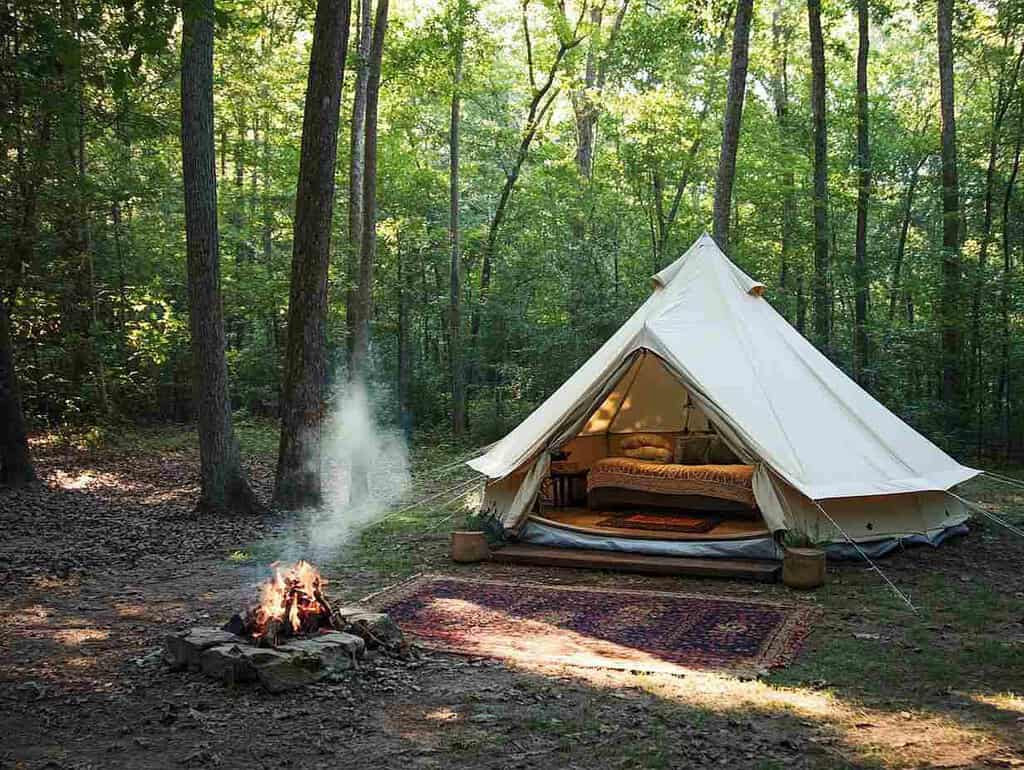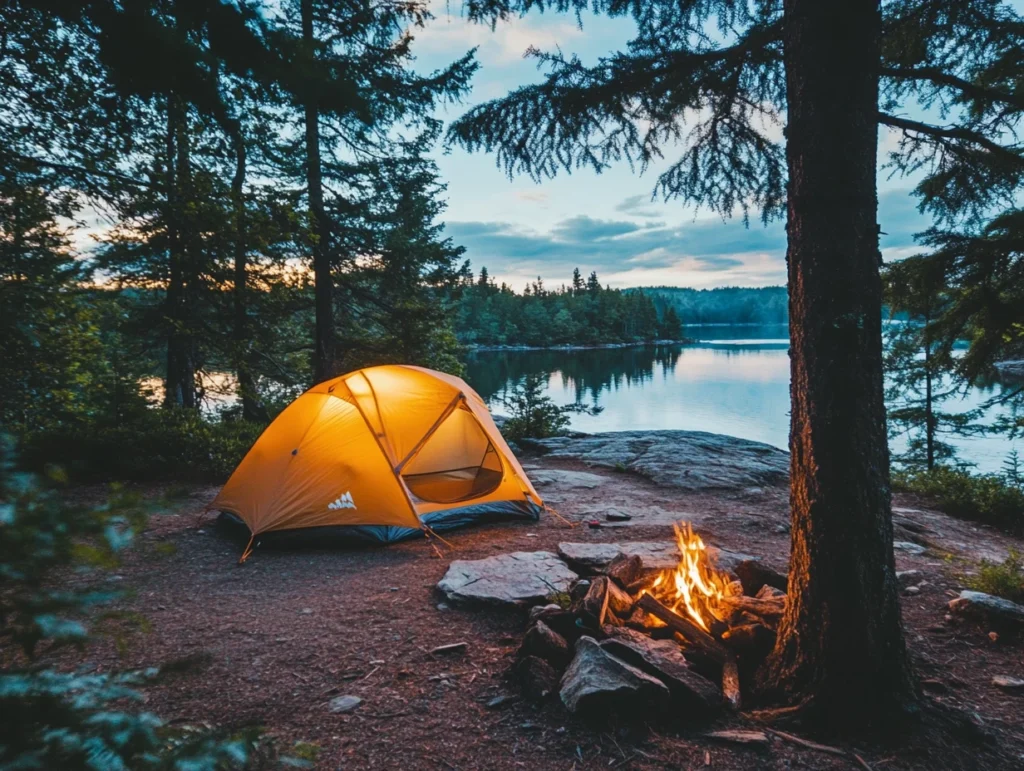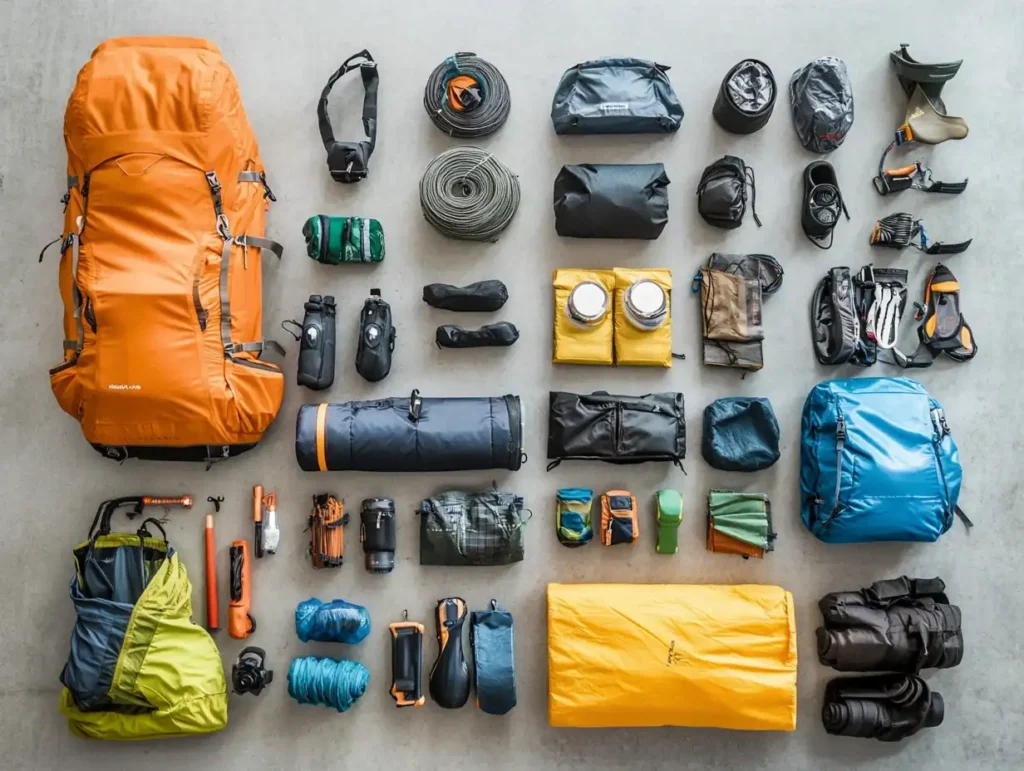This factoid amazed me! Did you know that the average camper produces a whopping 1kg of rubbish per day? That’s like carrying a small bowling ball of waste into our beautiful wilderness every single day you’re out there!
As someone who’s been camping since I could walk (thanks, Dad!), this statistic hit me like a ton of bricks. It got me thinking – how can we enjoy the great outdoors without leaving it worse for wear?
Well, because we’re about to dive into the world of eco-friendly camping! It’s not just a buzzword. It’s a way of life that’s catching on faster than a wildfire in July (though let’s hope we don’t see any of those on our camping trips!).
In this guide, I’m going to share everything I’ve learned about reducing our carbon footprint while maximising our camping experience. Trust me, after years of trying and failing (and a few embarrassing mistakes), I’ve got some tricks that’ll make Mother Nature give you a big high five!
So, whether you’re a seasoned backpacker or a newbie who can’t tell a tent stake from a marshmallow stick, this guide will help you become an eco-conscious camper.
We’re talking about reducing your environmental impact while improving your outdoor adventure. Ready to green up your camping game? Let’s dive in!
Table of Contents
Essential Eco-Friendly Camping Gear: Must-Have Tools for Sustainable Adventures
Leave No Trace Principles: The Foundation of Eco-Friendly Camping
Sustainable Food and Meal Planning for Eco-Friendly Camping
Conserve and Protect: Smart Water Practices for Campers
Ignite Responsibly: Create Eco-Friendly Campfires
Sustainable Transportation for Eco-Friendly Camping Trips
Wildlife Conservation and Eco-Friendly Camping
Trailblaze Your Eco-Friendly Camping Journey: Next Steps, and Final Thoughts
What is Eco-Friendly Camping?
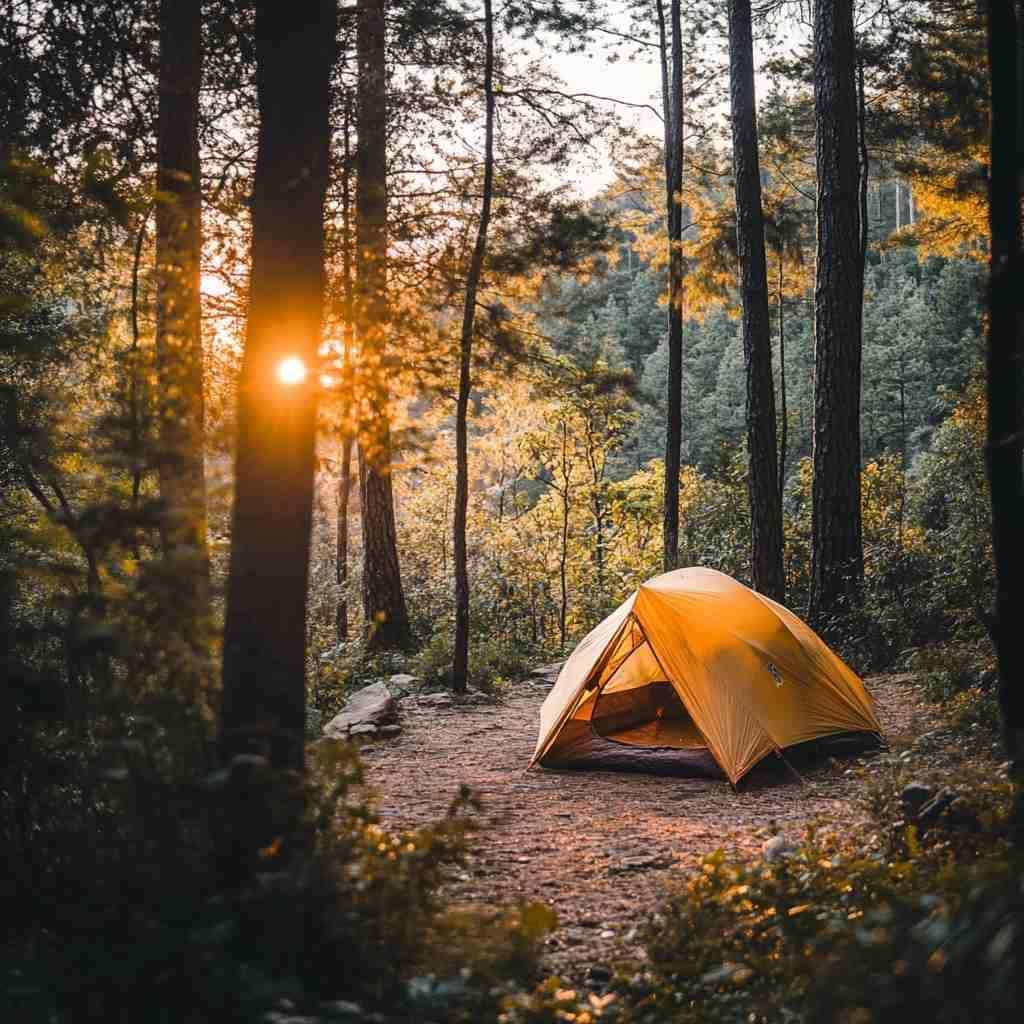
Alright, let’s start with the basics. Eco-friendly camping, or “green camping” if you’re feeling fancy, is all about enjoying the great outdoors while leaving the smallest footprint possible. It’s like playing a game of “The Floor is Lava,” but instead, “The Forest is Fragile.”
I remember my first attempt at eco camping. I thought I was being so clever by bringing biodegradable soap to wash my dishes in the stream.
Turns out, even biodegradable soap can harm aquatic life! Talk about a facepalm moment. But hey, we live and learn, right?
The core principles of eco-friendly camping are pretty straightforward:
- Respect nature (it was here first, after all)
- Minimise waste (pack it in, pack it out)
- Conserve resources (water and energy aren’t unlimited, folks)
- Protect wildlife (they’re not here for your Instagram stories)
Now, you might be thinking, “Why bother? I’m just one person!” But here’s the thing – every little bit counts. If each of us tries to camp sustainably, we can maintain these beautiful spaces for future generations.
Plus, there’s something incredibly satisfying about knowing you’ve left a campsite exactly as you found it – or maybe even a little better!
Essential Eco-Friendly Camping Gear: Must-Have Tools for Sustainable Adventures
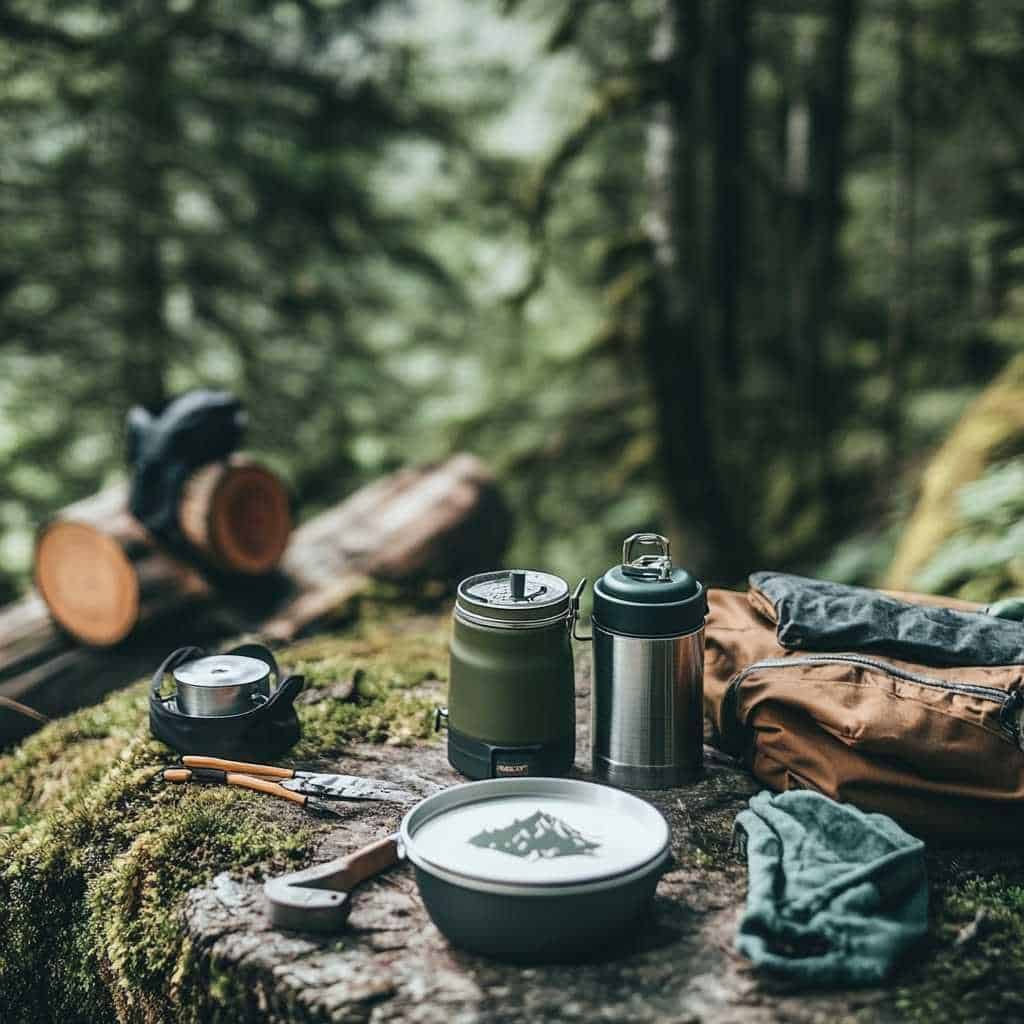
Let’s talk gear! When I first started my journey towards sustainable outdoor adventure, I thought I’d have to sacrifice all my cool gadgets. Boy, was I wrong! The world of green camping technology has exploded faster than a marshmallow in a campfire.
First up, tents. Look for ones made from recycled materials. I’ve got a sweet setup made from recycled plastic bottles. It’s like sleeping in a giant water bottle, but way more comfortable!
For sleeping bags, consider options filled with recycled polyester or responsibly sourced down. And don’t forget the sleeping pad – there are some great ones made from recycled foam out there.
Now, let’s talk power. Solar-powered devices are where it’s at! I’ve got a solar charger that’s seen me through many a wilderness camping trip. It’s like having a tiny, portable sun in your backpack.
Water bottles and filtration systems are crucial for eco camping. Ditch those single-use plastic bottles and invest in a good reusable one. Pair it with a reliable water filter, and you’re set to drink from streams like a true woodland nymph (just maybe don’t tell anyone I called you that).
When it comes to toiletries, go biodegradable all the way. From toothpaste to sunscreen, there are eco-friendly options for everything. Trust me, the fish will thank you.
Lastly, let’s talk about camp stoves. Look for fuel-efficient models that use renewable energy sources. I’ve got a little wood-burning stove that makes me feel like a proper wilderness chef every time I use it.
Remember, the most sustainable gear is often the gear you already own. So before you go on a shopping spree, check if you can repurpose or upcycle what you’ve got!
Leave No Trace Principles: The Foundation of Eco-Friendly Camping
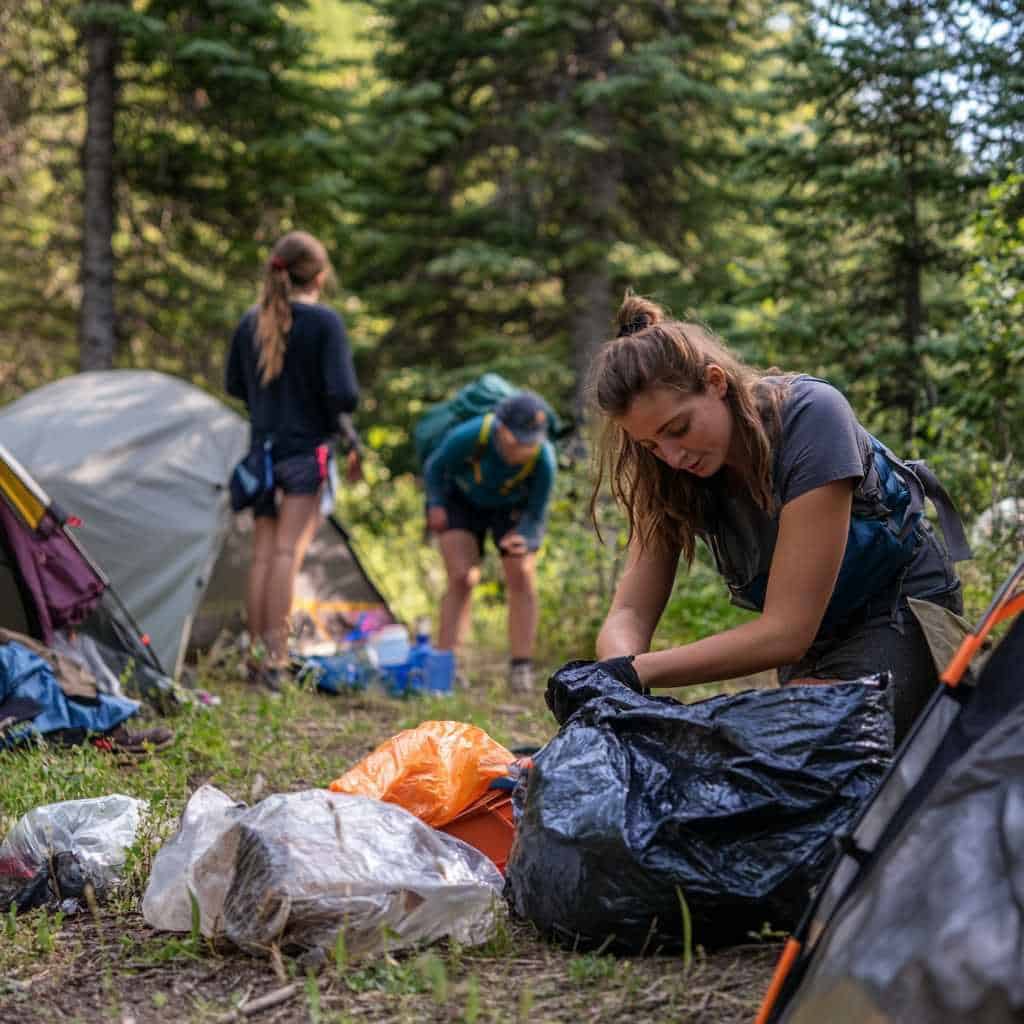
Alright, gather ‘round the virtual campfire, folks. It’s time to talk about the holy grail of eco-conscious outdoor recreation: Leave No Trace principles.
These seven guidelines are like the Ten Commandments of the camping world, except there are only seven, and breaking them won’t result in divine retribution (but it might earn you some dirty looks from fellow campers).
- Plan Ahead and Prepare: This is where I usually fail. I once forgot a can opener and spent an hour trying to open a can of beans with a rock. Don’t be like me. Plan well.
- Travel and Camp on Durable Surfaces: Stick to established trails and campsites. The wilderness isn’t your personal obstacle course.
- Dispose of Waste Properly: Pack it in, pack it out. Yes, even that. Especially that.
- Leave What You Find: That pretty rock? Leave it. That cool stick? Leave it. That bear? Definitely leave it.
- Minimise Campfire Impacts: Keep your fires small and in designated areas. Smokey the Bear is watching you.
- Respect Wildlife: Remember, you’re in their home. Don’t be that annoying house guest.
- Be Considerate of Other Visitors: Nobody wants to hear your bluetooth speaker blasting “Born to Be Wild” at 6:00am. Trust me.
Following these principles is key to reducing your environmental impact while camping. It’s not always easy (I’m looking at you, number 3), but it’s always worth it.
Sustainable Food and Meal Planning for Eco-Friendly Camping
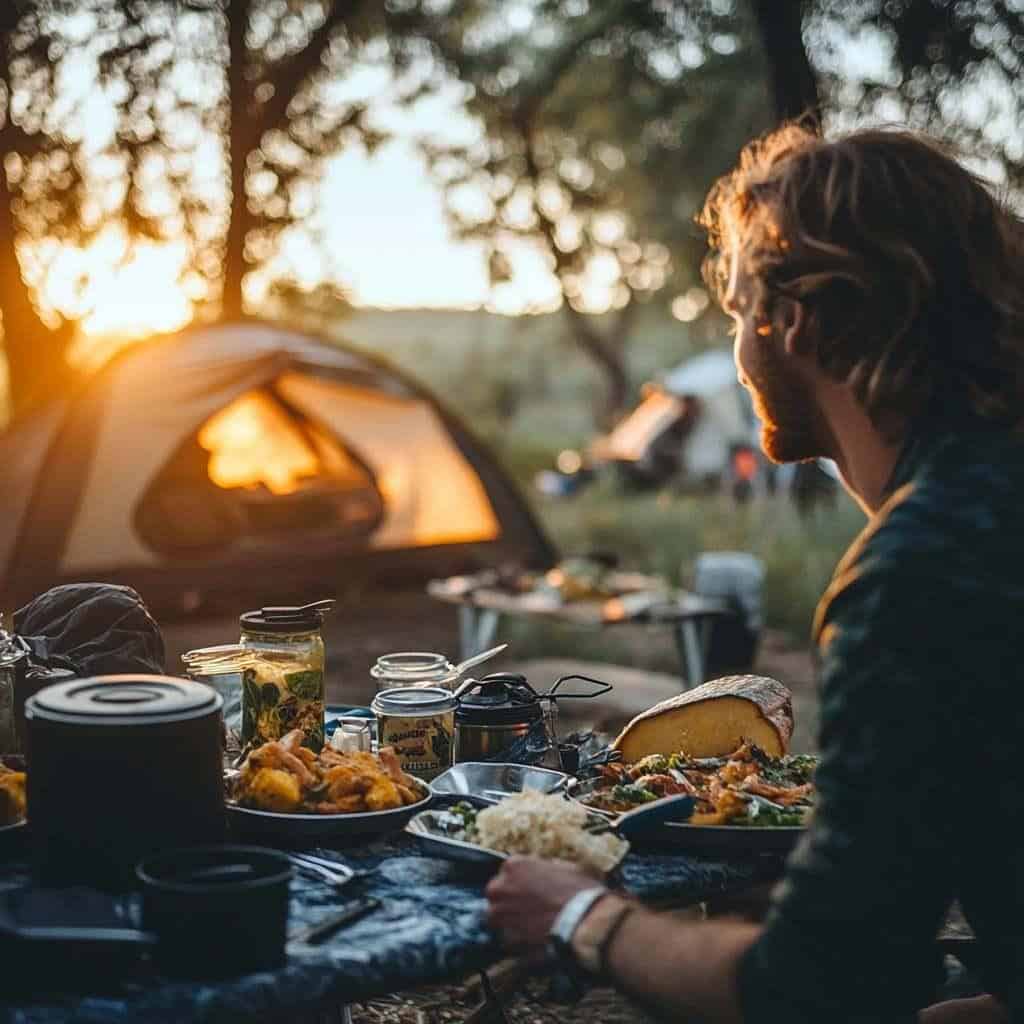
Food, glorious food! It’s one of the best parts of camping, right? But it can also be one of the biggest sources of waste.
Fear not, my hungry friends. I’ve got some tips to make your camp kitchen as green as the forest around you.
First off, meal planning is your best friend. I learned this the hard way after lugging a whole watermelon into the back of beyond.
Pro tip: pre-cut your fruits and veggies at home.
Invest in some good reusable containers and utensils. I’ve got a set of bamboo cutlery that makes me feel like an eco-warrior every time I use it. And please, for the love of all that’s holy, say no to paper plates and plastic forks!
When it comes to food choices, think local and organic. Not only is it better for the environment, but it also tastes better. Trust me, nothing beats cooking up some locally sourced trout over a campfire.
Speaking of campfires, let’s talk about proper food storage. Unless you want to wake up to a bear rummaging through your cooler (been there, not fun), make sure to store your food properly. Use bear canisters or hang your food high and away from your campsite.
Lastly, don’t forget about composting! Many eco-friendly campsites now have composting facilities. If not, pack out your food scraps and compost them at home.
Conserve and Protect: Smart Water Practices for Campers
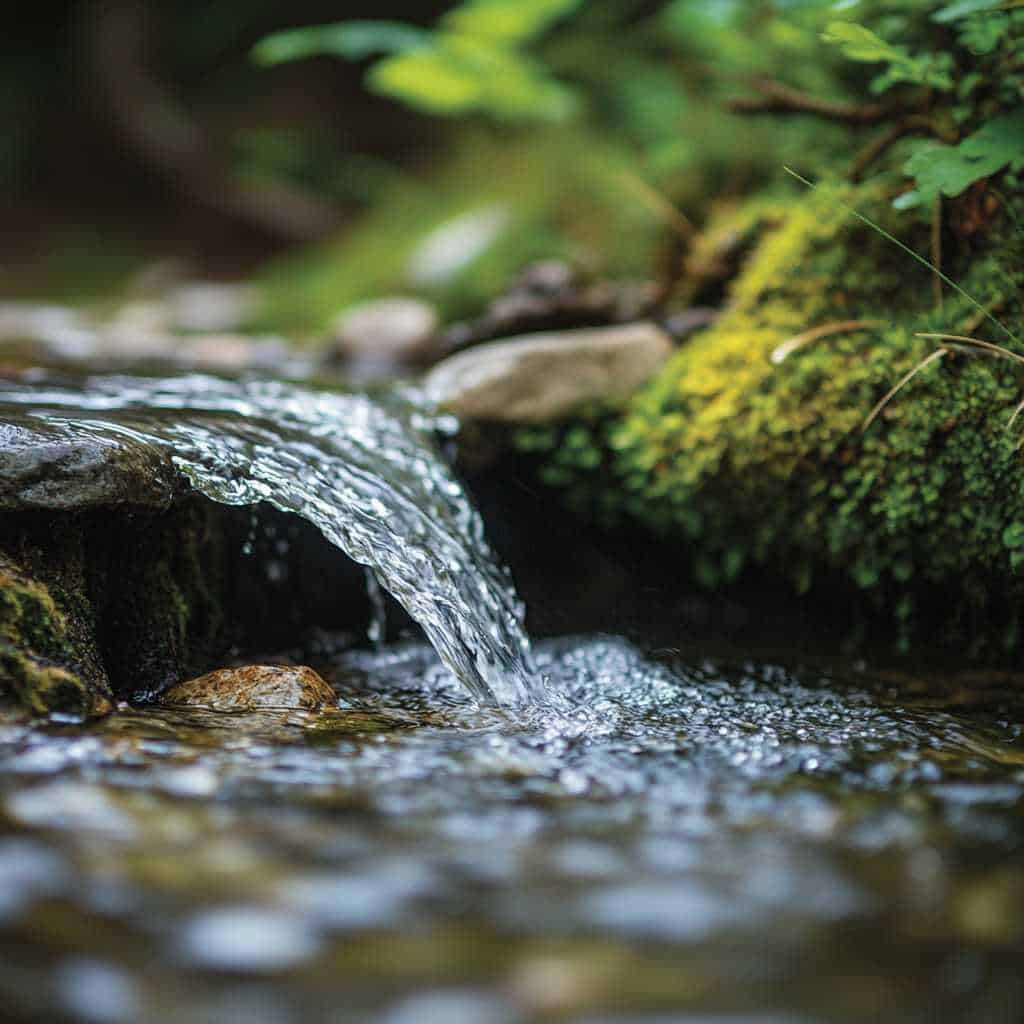
Water, water everywhere, but not a drop to waste! Water conservation is crucial when you’re out in the wilderness. After all, nobody wants to be that person who empties the stream before the next camper arrives.
First things first, bring a reusable water bottle. I’ve got one that’s been with me on more adventures than I can count. It’s like my trusty sidekick, if sidekicks were really good at holding water.
When it comes to water purification, there are tons of eco-friendly options out there. I’m a big fan of UV purifiers – they’re like magic wands that make water safe to drink. Just don’t try to use them as actual wands. Trust me, I’ve tried.
Now, let’s talk about grey water.
That’s the stuff left over from washing dishes or yourself. Don’t just dump it anywhere! Scatter it widely, at least 200 feet from any water sources. Mother Nature isn’t a fan of impromptu ponds.
And please, for the love of all things green, don’t wash yourself or your dishes directly in water sources. The fish don’t need to taste your biodegradable soap, no matter how eco-friendly it is.
Ignite Responsibly: Create Eco-Friendly Campfires
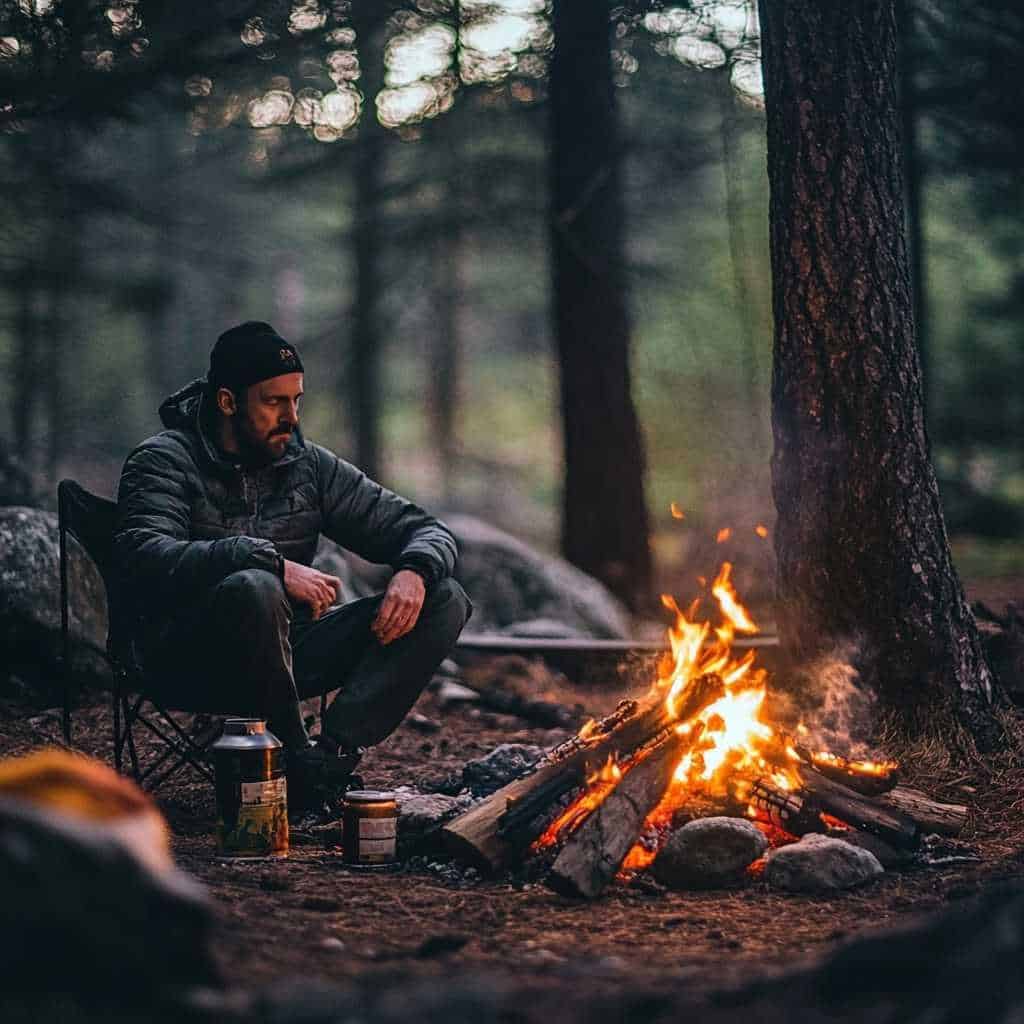
Ah, the campfire. It’s the heart of any camping trip. It’s the place where stories are told, marshmallows are roasted, and someone inevitably tries to prove they can jump over it (spoiler alert: they can’t).
But here’s the thing: campfires can be pretty rough on the environment if not done right. So let’s talk about how to keep your campfire eco-friendly.
First off, consider alternatives. I’ve got a little portable gas stove that’s perfect for cooking without the need for a fire. It’s not quite as romantic, but it gets the job done with minimal impact.
If you do decide to have a fire, keep it small. Remember, we’re aiming for cosy, not “visible from space.” Use existing fire rings when possible, and only gather dead and downed wood. No hacking at live trees, Grizzly Adams!
When it’s time to put out your fire, do it right. Drown it, stir it, drown it again. I once thought I’d put a fire out completely, only to wake up to smouldering embers. Not my proudest moment.
Sustainable Transportation for Eco-Friendly Camping Trips
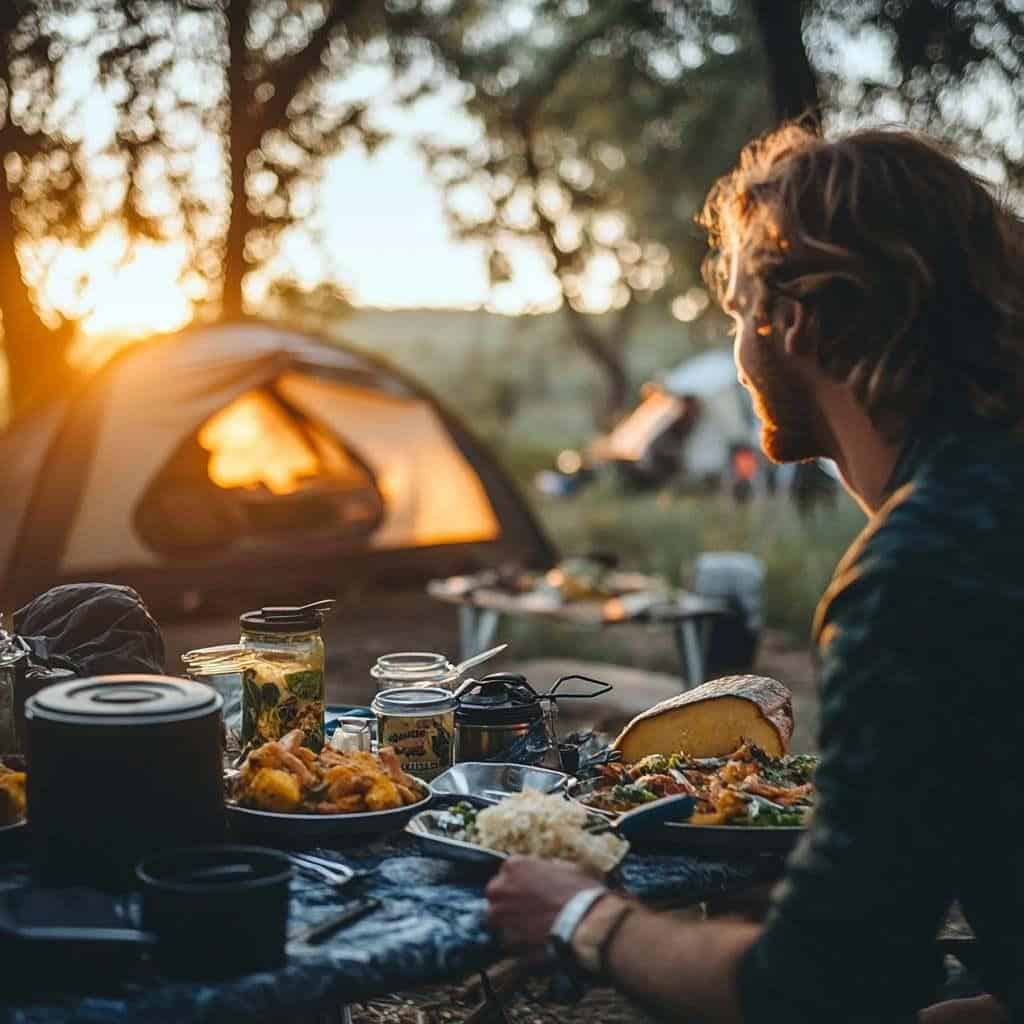
Alright, let’s talk about getting to your campsite. After all, the journey is part of the adventure, right?
If you can, try carpooling. It’s like a road trip and a camping trip all rolled into one! Plus, it’s a great way to reduce your carbon footprint.
I once carpooled with a guy who knew every word to every Bon Jovi song. It was…an experience.
Public transportation is another great option. Some national parks have shuttle services. It’s like having a chauffeur, if your chauffeur wore ranger hats and gave informative talks about local flora and fauna.
For the truly adventurous, consider bicycle camping. I tried this once. Let’s just say I have a newfound respect for anyone who can pedal uphill with a tent strapped to their back.
And hey, here’s a radical idea: choose campsites closer to home. You don’t always have to travel far to find beautiful eco-friendly campsites. Some of my best camping experiences have almost been in my backyard!
Wildlife Conservation and Eco-Friendly Camping
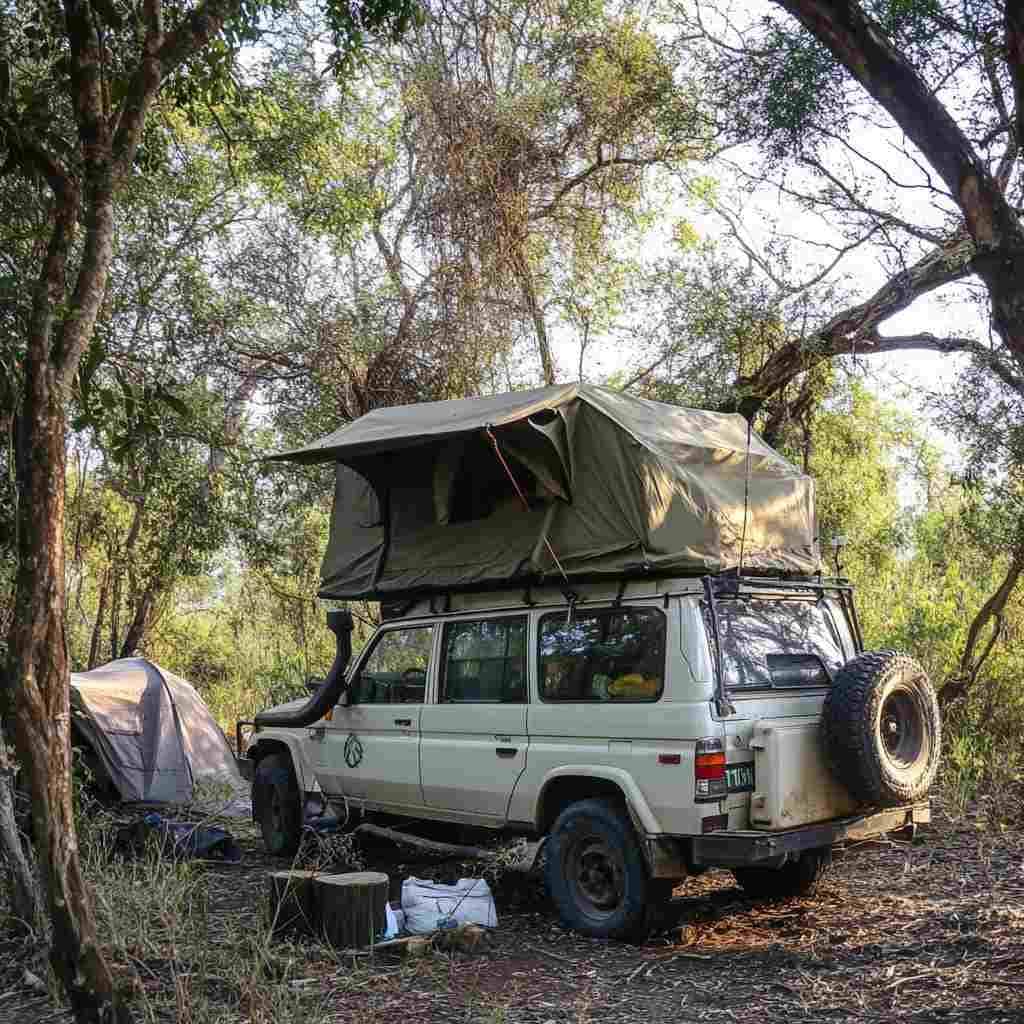
Let’s chat about our furry (and not-so furry) friends in the wild. Remember, when you’re camping, you’re essentially crashing in their place. So let’s be good guests, shall we?
First rule of wildlife watching: look, don’t touch. I know it’s tempting to try and pet that cute squirrel, but trust me, it won’t end well. For you or the squirrel.
Proper food storage isn’t just about keeping your snacks safe. It’s about protecting wildlife, too. Animals that get used to human food can become dependent on it, which is bad news for everyone involved.
Try to understand and respect animal habitats. That means no traipsing through nesting areas or dens. I once accidentally set up camp near a skunk den. Let’s just say I learned that lesson the hard way.
And hey, why not participate in some citizen science while you’re out there? There are lots of great apps that let you record wildlife sightings. It’s like being a scientist, but with more marshmallows.
Trailblaze Your Eco-Friendly Camping Journey: Next Steps, and Final Thoughts

Whew! We’ve covered a lot of ground, haven’t we? From gear to grub, fires to wildlife, we’ve explored all the ins and outs of eco-friendly camping.
Remember, the goal here isn’t perfection. It’s progress. Every little step you take towards more sustainable camping practices makes a difference. Trust me, Mother Nature notices (and she totally has a favourite child – it could be you!).
So, next time you head out into the great outdoors, challenge yourself to implement some of these eco-friendly camping practices. Start small if you need to. Maybe it’s bringing a reusable water bottle instead of plastic ones.
Or it’s choosing a campsite closer to home to reduce your travel impact. Whatever it is, know that you’re doing your part to save our beautiful wilderness for future generations of adventurers.
And hey, don’t forget to spread the word! Share your eco-friendly camping tips with your fellow outdoor enthusiasts. After all, the more of us who camp sustainably, the better off our planet will be.
Now, I want to hear from you! What are your favourite eco-friendly camping hacks? Any hilarious mishaps while trying to be green in the great outdoors? Share your stories in the comments below.
And remember, leave only footprints, take only memories (and maybe a few Instagram-worthy photos). Happy camping, you eco-warriors!

